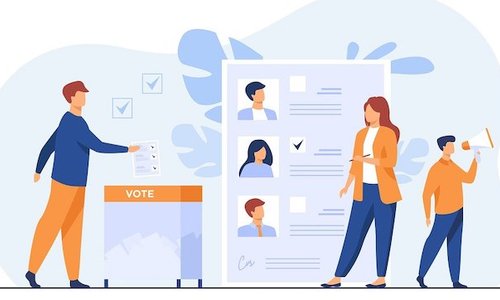Back in 2012, Barack Obama was one of the first candidates to really embrace digital means to push his presidential campaign. As well as taking over social media in an unprecedented way, his team’s work with big data analytics was a major factor in his victory.
Fast-forward to 2020, and data analytics has an even greater role to play – not just in predictions, but in informing campaign leaders and strategists where to increase their efforts and strive to tip states who might be wavering over to one side or the other. But how do data analysts gather and use this data? And is it really making a difference?
Political Polls and Big Data
National political polls aren’t always the best way to predict an outcome of an election, but they can give an indication of the current popularity of a candidate. This can be useful for political campaign leaders to see what’s working and what’s not – what tactics are resonating with the populace, and what’s turning them off.
Current polling data is more advanced than it’s ever been. Data gathering services conduct polls via phone, online surveys, and a range of messaging services. Using a range of methods may help data analysts connect with a broader spectrum of voters than in previous years. For example, people across most walks of life will have a cell phone, but may not have access to a home computer. Widening the net like this means the data is more representative of the nation, rather than just a select few demographics. However, Big Data moves political analysis far beyond just analyzing poll responses.
The Lux Project
Lux Election 2020 is one of the key big data analysis projects. This supercomputer-run program doesn’t just take poll results, but gathers data in such a way as to paint a picture of voter sentiment.
Rather than relying on poll answers, Lux sweeps social media platforms for information on what people are saying about the current election campaign and the candidates, noting demographic points like the following:
- Race
- Age
- Gender
- Political affiliation
It then uses this demographic data, along with comments and opinions, to plot a trend line showing how sentiment rises or drops for each candidate. Interestingly, although many 2016 polls did not show that Trump was heading for a win, the previous version of the Lux software did. It seems that gathering this very detailed data based on a broad range of factors is far more accurate than simply relying on poll answers.
Lux’s purpose is to visualize complex data, allowing campaign strategists or political journalists to gain valuable insights quickly, even from very complex data sets. The system is a range of machine learning models designed to gather information from the channels used most by American citizens, such as social media platforms. Any publicly available information is fair game for Lux, and as it gathers, it learns. Currently, the Lux website grants access to:
- Political analysis trend charts
- Detailed voter maps based on social media activity
- The aforementioned sentiment analysis
Big Data Can’t Predict Everything
Of course, votes are about people, not polls. If, the day before the election, hundreds of thousands of people change their minds or an event occurs which paints a candidate in a bad light, then all that analysis goes out of the window. Outsider wins are always possible, surprising as they may be.
One concern about big data collation is that botswarming can skew results. This is the act of fraudulently creating social media accounts that spam the internet with particular opinions. However, botswarming and similar election manipulation strategies are now so well known that their presence can be taken into account by intelligent data analysts.
Integrate.io and Big Data
It’s interesting to note that in the 2016 campaign, around 15% of Clinton’s team worked on data and analytics. Over 38% of Trump’s team dedicated themselves to data analysis and strategy, and we saw how that turned out. Organizations that put a higher priority on effective data gathering and analytics find that gives them the edge over the competition.
All businesses can use big data to create their own predictions and boost results. Talk to us about how using an intelligent ETL tool can merge your data for the best analytics, helping you stay in touch with what your customers really want and what their future needs might be.










